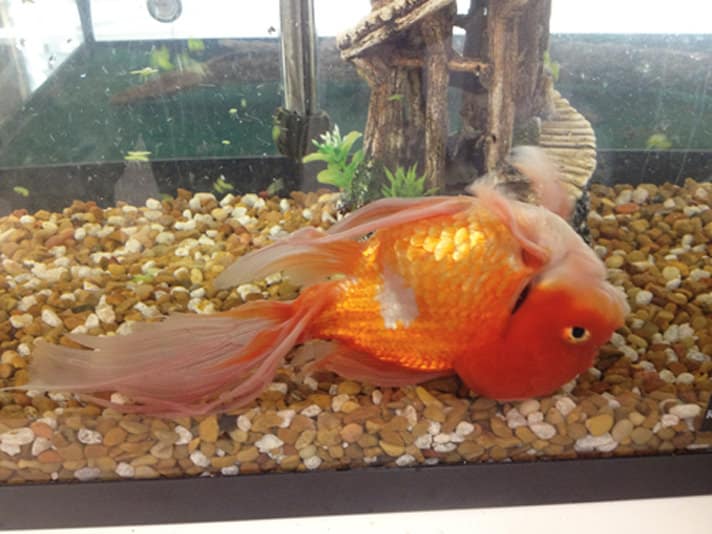The length of time a fish can live with swim bladder disease can vary greatly depending on several factors, including the severity of the condition and the specific species of fish. In some cases, fish with swim bladder disease can recover within a few days or weeks with proper treatment and care. However, in more severe cases or if left untreated, the prognosis may be poor, and the fish may only live for a few weeks or months. It is essential to provide appropriate treatment and address any underlying causes of swim bladder disease to increase the chances of recovery and prolong the fish’s lifespan.
Know More About: how long can a fish live with swim bladder disease
Fish are fascinating creatures that inhabit various aquatic environments. However, just like any other living being, they are susceptible to various health conditions, one of which is swim bladder disease. This condition affects the swim bladder, an organ responsible for buoyancy control in fish. It can impact their quality of life and even lead to premature death. In this article, we will explore swim bladder disease in fish and discuss its prognosis in terms of how long a fish can live with this condition.
Swim bladder disease, also known as swim bladder disorder or flipover, is a commonly diagnosed affliction in aquarium fish. The swim bladder itself is a gas-filled organ located in the fish’s abdomen that helps them control their vertical position in the water. When an issue arises with this organ, it can result in the fish experiencing difficulties in maintaining their balance, which affects their swimming abilities and overall well-being.
Several factors can contribute to swim bladder disease in fish. These factors can vary from genetic predispositions and nutritional imbalances to bacterial infections and physical trauma. Poor water quality, overfeeding, and gulping in air are also known to increase the risk of developing swim bladder disease.
It is important to highlight that swim bladder disease is not usually fatal in itself. In many cases, with proper care and treatment, fish can live for extended periods with this condition. However, the prognosis heavily depends on several factors, including the fish species, the severity of the swim bladder disorder, and the underlying cause.
Certain fish species are more prone to swim bladder disease, including goldfish, bettas, and angelfish. These species have a greater risk of developing swim bladder issues due to their breeding history and physiological characteristics. For instance, goldfish are known to have a compressed swim bladder due to their body shape, which predisposes them to swim bladder disorders.
The severity of the swim bladder disorder also plays a significant role in determining the fish’s life expectancy. Mild cases can often be managed with adjustments to the fish’s diet, such as feeding them a high-fiber diet or introducing peas to their meals. These dietary changes can aid in relieving constipation, a common cause of swim bladder disease. With proper care, fish with mild cases of swim bladder disease can live relatively normal lives and reach their expected lifespan.
However, more severe cases might require additional intervention. In some instances, fish may require manual assistance to release trapped gas from the swim bladder. This can be done by gently massaging the fish’s belly or by adjusting its position in the water to allow the trapped gas to escape. Seeking veterinary advice may be necessary for these cases, especially when infections or anatomical abnormalities are present.
In conclusion, swim bladder disease is a common condition that affects the swim bladder in fish, impacting their buoyancy control and swimming abilities. While this disorder can significantly affect a fish’s quality of life, it is not typically fatal. The prognosis varies depending on factors such as fish species, underlying causes, and the severity of the disorder. With appropriate care, dietary adjustments, and potential veterinary assistance, fish with swim bladder disease can often live for extended periods, allowing enthusiasts to continue admiring these captivating creatures in their aquaria.
FAQs on how long can a fish live with swim bladder disease
1. What is swim bladder disease in fish?
Swim bladder disease is a condition that affects a fish’s ability to regulate buoyancy due to a malfunctioning or damaged swim bladder.
2. How long can a fish live with swim bladder disease?
The prognosis for fish with swim bladder disease varies greatly depending on the underlying cause and treatment. In some cases, fish can live for months or even years with appropriate care.
3. What causes swim bladder disease in fish?
Swim bladder disease can be caused by various factors, including bacterial or viral infections, poor water quality, overfeeding, genetic predisposition, and physical injury.
4. Can swim bladder disease be cured?
Treatment options for swim bladder disease are available but vary depending on the cause. While some cases can be cured, others may be managed to improve the fish’s quality of life.
5. Can swim bladder disease be prevented?
Prevention involves maintaining good water quality, feeding the fish appropriate amounts, providing a balanced diet, and avoiding overfeeding. Regular check-ups by a veterinarian can help detect any early signs of swim bladder disease.
6. Should I remove a fish with swim bladder disease from the tank?
Removing a fish from the tank is not always necessary unless it is experiencing severe distress or unable to swim or eat. Consult a veterinarian to evaluate the situation and determine the appropriate course of action.
7. Does swim bladder disease affect all fish species?
Swim bladder disease can affect various species of fish, including bettas, goldfish, guppies, and tetras. However, certain species are more prone to this condition due to genetic factors.
8. Can swim bladder disease be contagious to other fish?
Swim bladder disease itself is not contagious, but the underlying causes, such as infections, can spread to other fish if proper quarantine procedures are not followed.
9. What are the signs of swim bladder disease in fish?
Common signs of swim bladder disease include floating to the surface or sinking to the bottom, loss of balance and coordination, difficulty swimming, loss of appetite, and bloating.
10. When should I consult a veterinarian for swim bladder disease?
If your fish shows persistent signs of swim bladder disease or experiences a sudden decline in health, it is recommended to consult a veterinarian with experience in fish health. They can provide a diagnosis and guide you through the appropriate treatment options.

